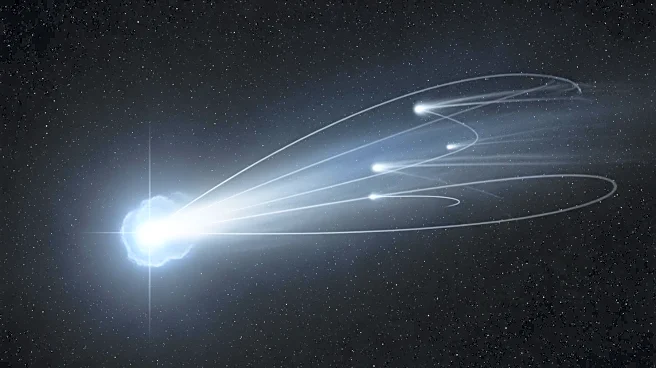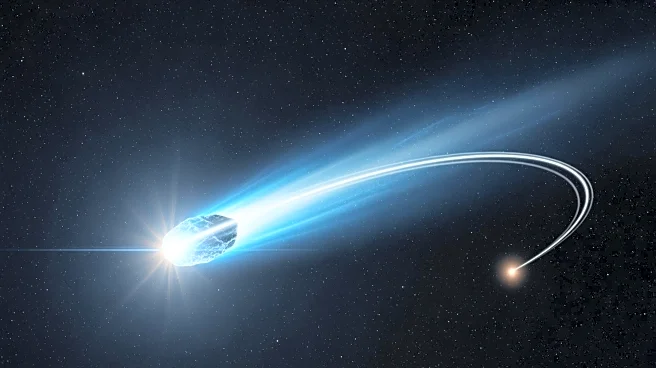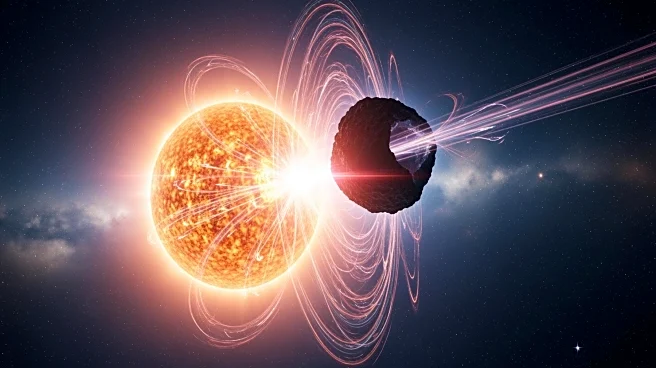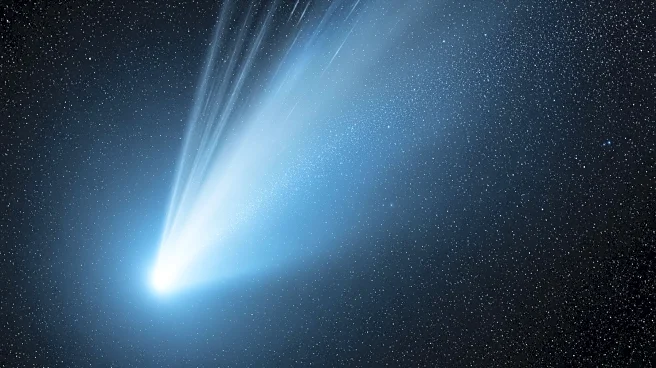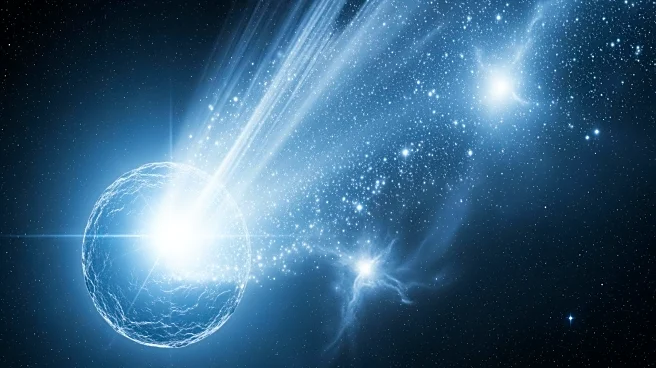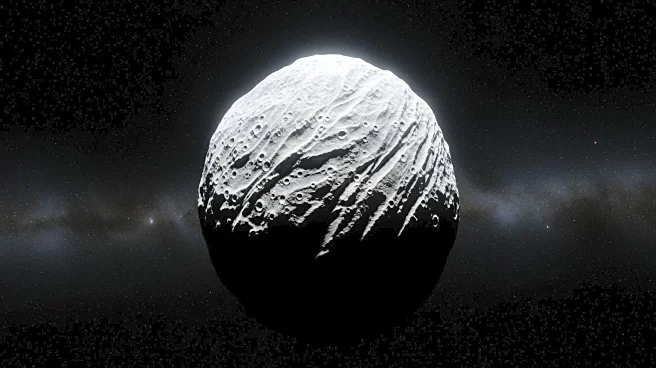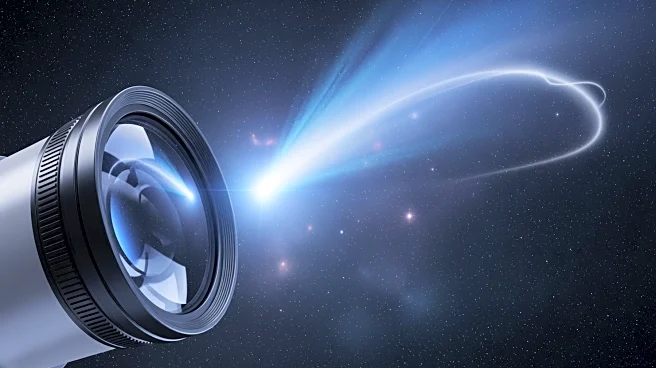What's Happening?
Astrophotographer Satoru Murata captured a stunning image of the interstellar comet 3I/ATLAS, showcasing its multiple tails and jets. The comet, traveling at over 130,000 mph, originates from the 'frontier'
region of the Milky Way and is significantly older than our solar system. The image reveals the comet's green glow, long ion tail, and shorter anti-tail, alongside the distant galaxy NGC4691. The comet's unusual characteristics have sparked interest and speculation, although experts agree it is a natural comet.
Why It's Important?
The observation of 3I/ATLAS provides valuable data on interstellar objects, which are rare and offer insights into the formation of celestial bodies outside our solar system. The comet's behavior, including its anti-tail and brightening events, challenges existing models and encourages further research. Understanding these phenomena can enhance knowledge of cosmic dynamics and contribute to the study of planetary systems beyond our own.
What's Next?
NASA is set to release high-definition images of 3I/ATLAS captured during its close flyby of Mars, which will provide further details on its structure and behavior. Researchers worldwide are eager to analyze these images to gain a deeper understanding of the comet's composition and trajectory. Continued observation will help refine predictions about its path and potential interactions with other celestial bodies.
